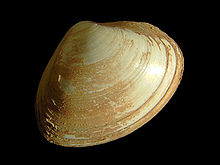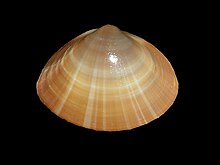| Mactridae Temporal range: Cretaceous to Present | |
|---|---|
 | |
| Shell of Spisula solida | |
| Scientific classification | |
| Domain: | Eukaryota |
| Kingdom: | Animalia |
| Phylum: | Mollusca |
| Class: | Bivalvia |
| Order: | Venerida |
| Superfamily: | Mactroidea |
| Family: | Mactridae Lamarck, 1809 |
| Genera | |
See text. | |
Mactridae, common name the trough shells or duck clams, is a family of saltwater clams, marine bivalve mollusks in the order Venerida.

